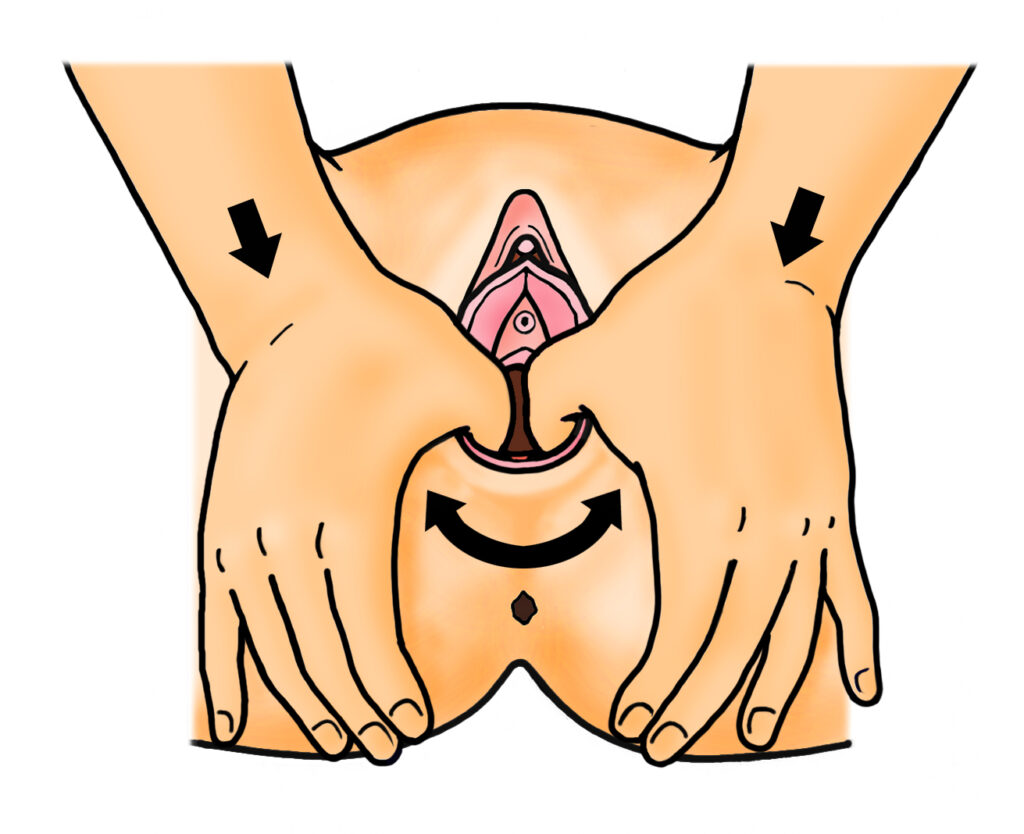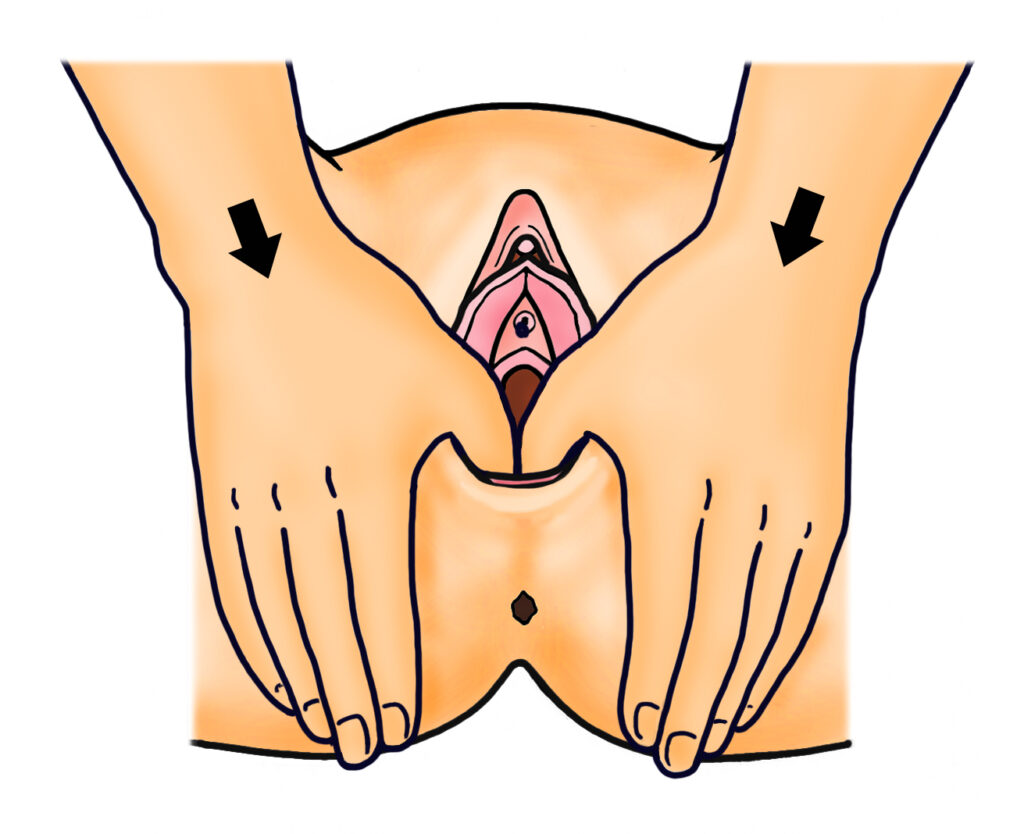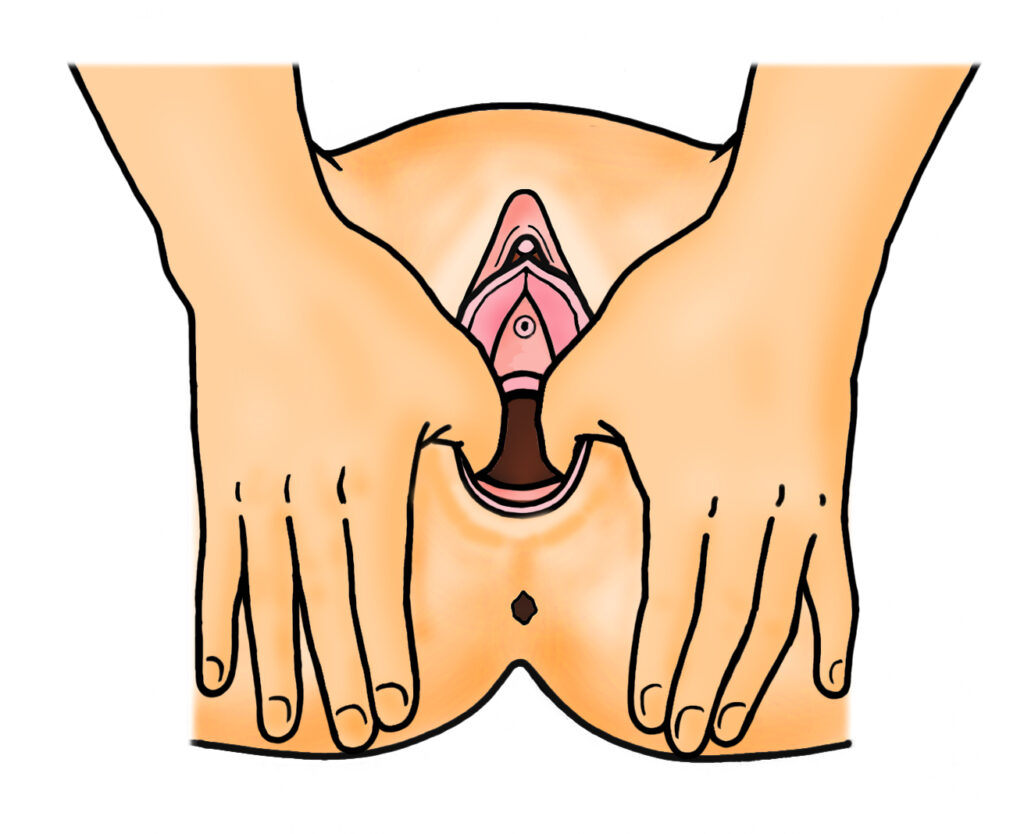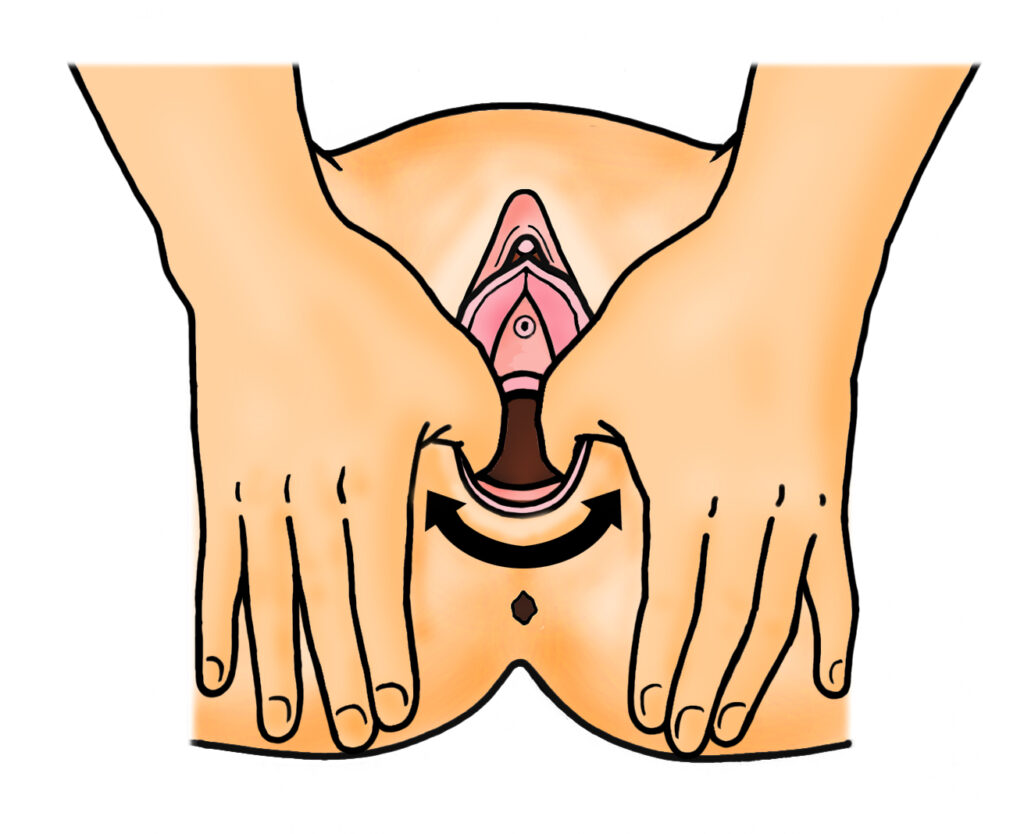Perineal massage during pregnancy may help to gradually soften and stretch the vagina and perineum in preparation for vaginal childbirth. This leaflet aims to explain the potential benefits of this and give information on how and when to perform the massage.
What is the perineum?
The perineum is the area of skin and muscles between your vagina and anus (opening to your back passage). This area naturally stretches to allow your baby’s head and body to be born. This stretching can result in tears to the perineum and vagina if the skin is unable to stretch enough to accommodate the birth of the baby.
At times when a baby needs to be born quickly or assistance is required in the birth, you may be offered for a small cut, called an episiotomy, to be performed in this area.

What are the benefits of perineal massage?
It is estimated that around 90% of people will have some trauma (tear or episiotomy) to their perineum during vaginal childbirth. Up to two thirds of these people will require stitches.
Perineal massage is a way of preparing the perineum to stretch more easily during vaginal birth. It may also help you to become familiar with the feeling of pressure or stretching of the perineum that you will feel during the birth of your baby.
Research has shown that regular perineal massage during the last few weeks of pregnancy may reduce perineal tearing, or the need to be offered an episiotomy, and reduce the need for stitches. Studies have suggested perineal massage to be particularly beneficial for individuals having their first vaginal birth.
Perineal massage has also been shown to reduce perineal pain in the months following childbirth for people who have had more than one vaginal birth. If you have previously had a perineal tear or episiotomy you can perform antenatal perineal massage if you feel comfortable to do so.
Important
Do not perform perineal massage if you think your waters may have broken, you have thrush, herpes or any other vaginal infection. Please contact the Maternity Assessment Centre (MAC) if you suspect any of these conditions.
When do I start perineal massage?
You can start any time after 34 weeks of pregnancy and should massage 3-4 times a week for 5-10 minutes each time. However, even undertaking the massage once or twice a week may be of benefit. There are no known risks from massaging your perineum.
How do I do perineal massage?
- The first few times you may find it easier to use a mirror and look at your perineum during massaging. It is entirely up to you if you wish your partner to assist you in the massage.
- Ensure your bladder is empty and wash your hands before you start.
- Adopt a comfortable position: the massage can be done in several positions; sitting, lying supported by pillows, squatting against a wall or standing with one foot raised and resting on the bath or toilet.
- You may find it more comfortable to undertake the massage after a bath or shower, as the warmth of the water can aid in softening the surrounding tissues.
- You can use olive oil, sunflower oil or sweet almond oil as lubrication (Do not use sweet almond oil if you have a nut allergy); if you are sensitive to any of these you can use a water-soluble lubricant jelly. Do not use baby oil, mineral oil, petroleum jelly or other petroleum based products.
- If you are doing the massage yourself it is probably easiest to use your thumbs. Otherwise your partner can use both index fingers.
- Place the fingers or thumbs about 5cm into the vagina (up to your second knuckle) and press downwards on the back wall towards the back passage so you can feel a stretch in the muscles around the vagina. This may tingle but should not hurt and may help you prepare for the feeling when your baby is ready to be born.
- Once you have felt this downward pressure, use your thumbs to go from right to left in a sweeping ‘U’ shaped movement.

- You can also go on to massage the skin of the perineum between the thumb and forefingers.
Remember
- The perineum may feel tight when you first start, but with continued massage you will begin to feel a difference in the stretch of the tissues.
- If you feel pain during any part of perineal massage, stop and try again another time. Use more oil/lubricant if required to reduce friction.
- If you have any questions or find the massage frightening or distressing, please discuss this with your community midwife. Only undertake perineal massage if you feel comfortable to do so.
- Continue to do regular pelvic floor exercises before and after your pregnancy.



Perineal Massage Video
Please watch this video which may be helpful.
Transcript
From 34 weeks it’s a really good idea to start doing some perennial massage in preparation for the birth of your baby.
Your perineum is a triangular muscle that sits between your vagina and your back passage. This muscle needs to stretch to make space for your baby.
Massaging in pregnancy can help this muscle stretch more easily and reduce the risk of you tearing. Other things that can help reducing the risk of tearing are using a warm compress during the second stage of labour as baby’s head is advancing. Your midwife may ask for your permission to put her hand on your perineum and on baby’s head to ensure that baby’s head is delivered slowly and reduce the risk of any tears occurring.
If you plan to deliver in water it is not possible for the midwife to put a hand on baby’s head or your perineum and guide baby’s head out for delivery, and this is why you are at an increased risk of tearing if you choose to have a water birth.
If your midwife is concerned that you may tear badly, then it is recommended that we do an episiotomy, which is a small cut on the perineum muscle.
Your consent will be gained prior to this being performed. If an episiotomy is required an injection of local anaesthetic is used to numb the area prior to the cut being performed. Significant tears on the perineum can involve your anal sphincter. It is recommended that you have a spinal anaesthetic which is similar to an epidural so you will be awake but completely numb so that the surgeon can repair the sphincter and the muscle adequately.
For more information about perineal massage in the antenatal period please go to the trust website where you will find the information leaflet.
If you have any questions about perineal massage, please speak with your midwife.